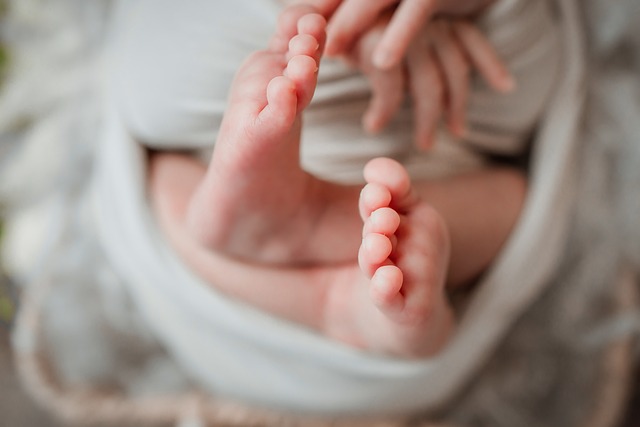Packing smart for travel with infants: an essential changing supplies checklist
Traveling with an infant is easier with a compact, well-planned changing kit. This teaser outlines key items and considerations — from absorbency and sizing to eco-friendly disposal and hygiene — to help caregivers pack efficiently and reduce stress on the go.

Traveling with an infant means planning for frequent changes, unpredictable schedules, and a small workspace. A well-organized changing supplies checklist focuses on reliable absorbency, correct sizing for comfort, and materials that protect skin health. Thoughtful packing reduces the chance of leaks, keeps supplies accessible during transit, and supports hygiene even when facilities are limited. Below are focused sections covering product features, fit, materials, disposal options, practical packing strategies, and cost considerations for caregivers traveling with newborns or toddlers.
How does absorbency and leak protection affect travel choices?
Absorbency is a core factor when selecting diapers for travel: higher absorbency reduces the need for mid-trip changes and increases confidence during long flights, drives, or overnight stays. Look for liners and core designs that distribute moisture away from the skin and offer targeted leak barriers around legs and the waist. While bulky, ultra-absorbent diapers can mean fewer changes, they may affect fit and comfort under car seats or layered clothing. Balance absorbency with fit to minimize leaks without sacrificing mobility during travel.
What sizing and fit matter for newborns and toddlers?
Correct sizing and fit differ between newborn and toddler stages. Newborn sizes account for umbilical sensitivity and smaller leg openings, while toddler sizes accommodate more movement and higher weight ranges. A snug waistline and flexible side panels maintain leak protection without pinching; adjustable tabs help customize fit as babies change positions during travel. Measure by weight range provided by manufacturers rather than age alone, and pack a mix of sizes if the child is near the upper or lower boundary between sizes.
Which materials and breathability support skin health?
Materials and breathability influence comfort and skin health, especially during extended travel. Diapers that combine soft, breathable topsheets with absorbent cores help keep moisture away from the skin and reduce irritation. Hypoallergenic or fragrance-free components can lower the risk of contact reactions in sensitive newborn skin. Natural or plant-derived materials can offer softer next-to-skin contact, but always check for performance trade-offs—breathability and moisture-wicking matter most to prevent rashes while traveling in varied climates.
How can hygiene, disposal, and eco-friendly options fit into travel plans?
Maintaining hygiene on the road means having a plan for used-diaper disposal and cleaning. Sealable diaper bags or small wet bags isolate soiled diapers until proper disposal is possible. Many travelers also prefer eco-friendly options such as biodegradable or plant-based materials; however, compostability and biodegradability can depend on local waste-processing capabilities. When facilities are limited, prioritize sealed containment and hand hygiene (sanitizer or wipes) to reduce odor and cross-contamination while awaiting access to local services.
What packing and changing strategies save space and reduce stress?
Compact packing and a clear organization system save time. Pack a travel changing kit with a thin portable changing mat, a modest supply of diapers sized for the trip duration plus a few extras, premoistened wipes, a small tube of barrier cream, and resealable bags for soiled items. For costsaving on longer trips, consider bulk pre-packing of single-use portions or refilling smaller containers to minimize space. Keep essentials in an easy-to-reach compartment for quick roadside or gate-side changes, and carry an extra outfit for both baby and caregiver in case of leaks.
Real-world cost and product comparison insights
Caregivers often weigh cost against performance. Below is a concise comparison of widely available diaper products and providers with typical cost estimations. These figures are generalized retail benchmarks and will vary by pack size, retailer, and geography. When planning travel, consider both per-diaper cost and performance features like absorbency and fit.
| Product/Service Name | Provider | Key Features | Cost Estimation |
|---|---|---|---|
| Pampers Swaddlers / Baby-Dry | Procter & Gamble | Good absorbency, soft topsheet, newborn sizing options | $0.20–$0.35 per diaper |
| Huggies Little Movers / Snug & Dry | Kimberly-Clark | Secure fit for active toddlers, strong leak guards | $0.18–$0.33 per diaper |
| Luvs Ultra Leakguards | Procter & Gamble | Budget-oriented, reliable leak protection | $0.10–$0.20 per diaper |
| Seventh Generation Free & Clear | Seventh Generation / Unilever | Plant-based materials, fragrance-free, eco-focused | $0.20–$0.40 per diaper |
| The Honest Company Diapers | The Honest Company | Plant-derived materials, design-forward, sensitive skin options | $0.25–$0.45 per diaper |
Prices, rates, or cost estimates mentioned in this article are based on the latest available information but may change over time. Independent research is advised before making financial decisions.
This article is for informational purposes only and should not be considered medical advice. Please consult a qualified healthcare professional for personalized guidance and treatment.
Conclusion
Preparing a travel-ready changing kit reduces stress and keeps infants comfortable on the move. Focus on absorbency, proper sizing, breathable materials, and a disposal strategy that fits your travel route and values. Combining those product attributes with smart packing—compact mats, sealed bags, and an organized supply mix—creates a practical, hygienic setup whether you are traveling short distances or taking longer trips with a newborn or toddler.






